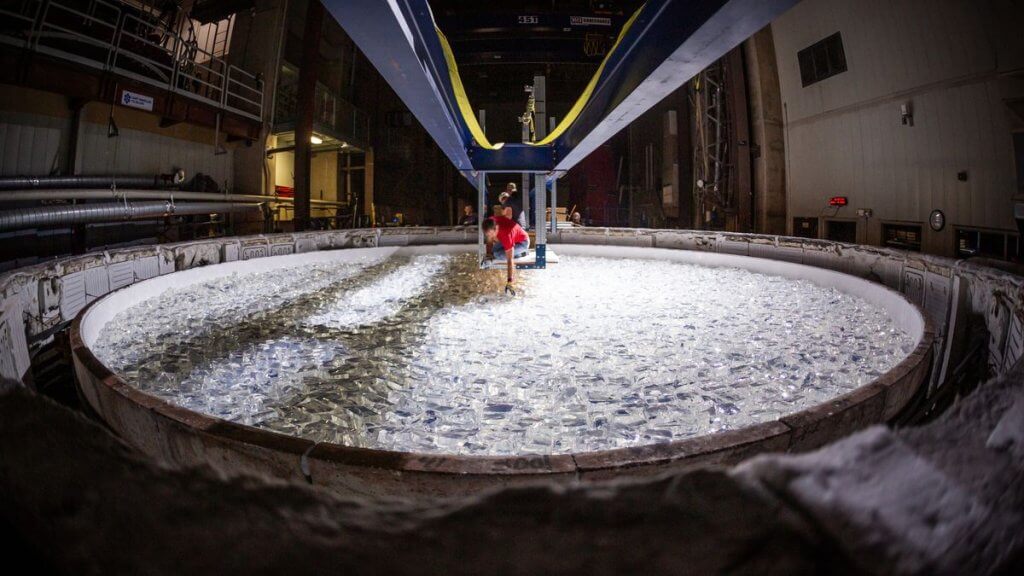Last week, in a spinning tank beneath the University of Arizona’s football stadium, an oven kicked to life.
The oven, at the University of Arizona’s Richard F. Caris Mirror Lab, began to heat a 20-ton, 27.6-foot-wide (8.4 meters) pool of optical glass to 2,130 degrees Fahrenheit (1,165 degrees Celsius), in the first steps of manufacturing a telescope mirror.
The oven’s present pastry is the seventh and final mirror of the Giant Magellan Telescope, itself under construction in the mountains of northern Chile. The telescope’s crown jewel will be a seven-segment mirror. When all seven pieces are in place, they will work together as a single light-collecting surface 80 feet (24.5 m) across.
Related: The Giant Magellan Telescope envisioned in Chile (images)
Each of those mirrors must be of the highest quality, and that takes time. This last mirror will take four months to cool. After that, technicians will begin grinding and polishing its surface to an astronomically precise finish — perfect to within one one-thousandth the width of a human hair. The entire process, from baking to completion, will take four years.
Afterward, the mirror segment will journey down to Chile by boat to join its six counterparts. One of those six is currently serving as a guinea pig to test a prototype of the telescope’s eventual support structure.
Astronomers expect to open the Giant Magellan Telescope’s supersharp eye on the universe by the end of this decade.
“The combination of light-gathering power, efficiency, and image resolution will enable us to make new discoveries across all fields of astronomy,” Rebecca Bernstein, the telescope’s chief scientist, said in a statement.
“We will have a unique combination of capabilities for studying planets at high spatial and spectral resolution, both of which are key to determining if a planet has a rocky composition like our Earth, if it contains liquid water and if its atmosphere contains the right combination of molecules to indicate the presence of life,” she added.

